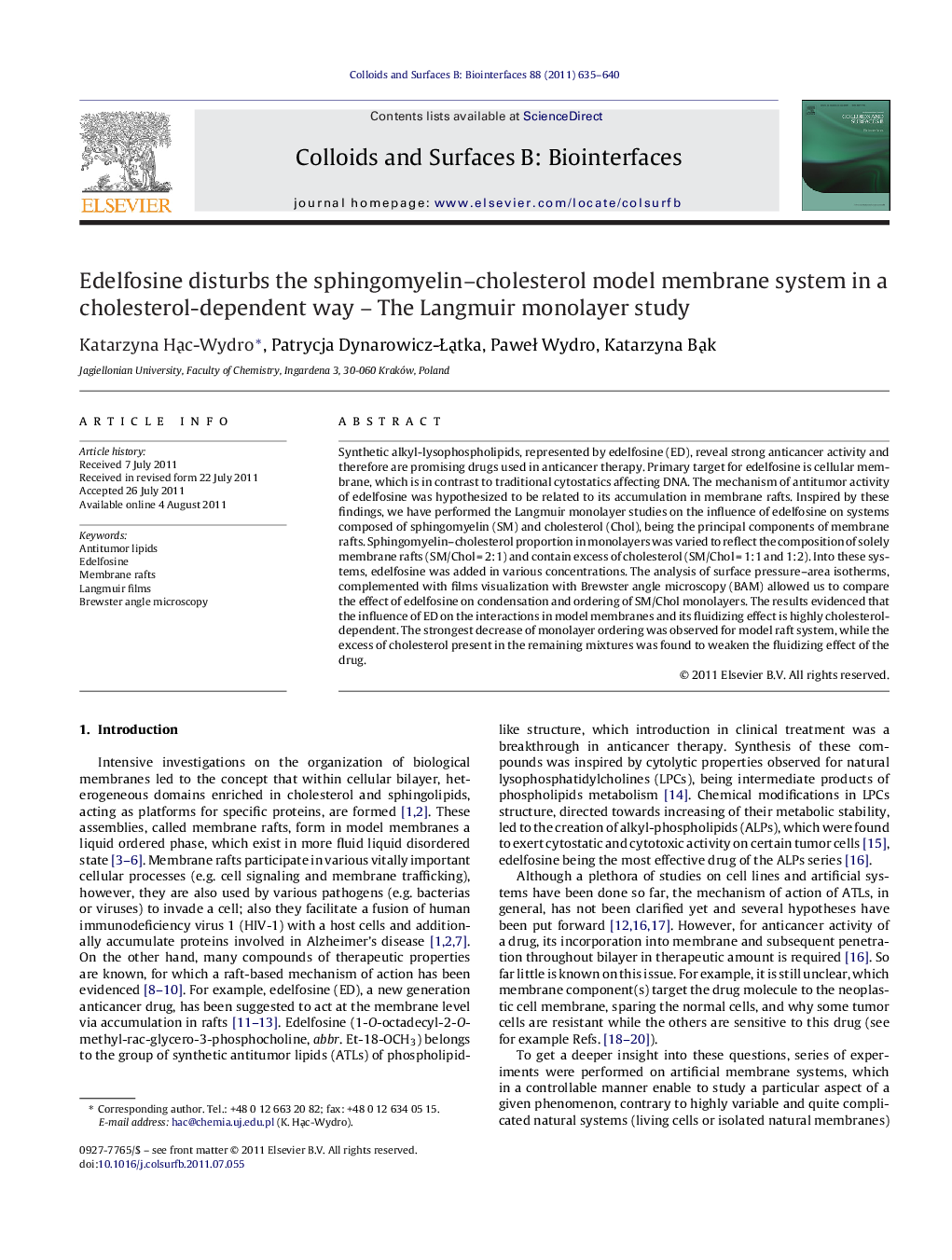| Article ID | Journal | Published Year | Pages | File Type |
|---|---|---|---|---|
| 601107 | Colloids and Surfaces B: Biointerfaces | 2011 | 6 Pages |
Synthetic alkyl-lysophospholipids, represented by edelfosine (ED), reveal strong anticancer activity and therefore are promising drugs used in anticancer therapy. Primary target for edelfosine is cellular membrane, which is in contrast to traditional cytostatics affecting DNA. The mechanism of antitumor activity of edelfosine was hypothesized to be related to its accumulation in membrane rafts. Inspired by these findings, we have performed the Langmuir monolayer studies on the influence of edelfosine on systems composed of sphingomyelin (SM) and cholesterol (Chol), being the principal components of membrane rafts. Sphingomyelin–cholesterol proportion in monolayers was varied to reflect the composition of solely membrane rafts (SM/Chol = 2:1) and contain excess of cholesterol (SM/Chol = 1:1 and 1:2). Into these systems, edelfosine was added in various concentrations. The analysis of surface pressure–area isotherms, complemented with films visualization with Brewster angle microscopy (BAM) allowed us to compare the effect of edelfosine on condensation and ordering of SM/Chol monolayers. The results evidenced that the influence of ED on the interactions in model membranes and its fluidizing effect is highly cholesterol-dependent. The strongest decrease of monolayer ordering was observed for model raft system, while the excess of cholesterol present in the remaining mixtures was found to weaken the fluidizing effect of the drug.
Graphical abstractFigure optionsDownload full-size imageDownload as PowerPoint slideHighlights► Incorporation of anticancer drug – edelfosine (ED) into SM/Chol model membranes. ► Influence of edelfosine on SM/Chol monolayers is cholesterol-dependent. ► Fluidizing and thermodynamically less favorable effect of ED on raft-like system. ► Strong ED–Chol interactions contribute to the effect of drug on model membranes.
